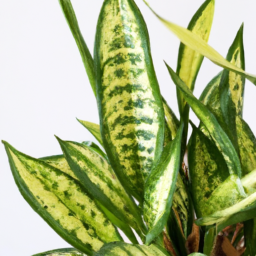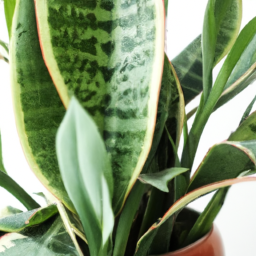
Are you looking to add some greenery to your living space but don’t have much room for large plants? Look no further than the perfect solution: plants for windows! These small, versatile plants are perfect for adding a touch of nature to any room, no matter how small. Whether you have a sunny window that gets plenty of light or a shady corner that needs a bit of life, there’s a plant for window that will thrive in your space. Let’s explore some of the best options for bringing the beauty of the outdoors inside with plants for windows.
Benefits of Choosing the Right Plant for Your Window
Enhancing Your Home’s Aesthetics
When it comes to choosing the right plant for your window, aesthetics play a crucial role. The right plant can add a touch of greenery and freshness to your home, making it more inviting and visually appealing. Whether you prefer a vibrant flowering plant or a lush green foliage plant, the right plant can enhance the overall look and feel of your space.
In addition to adding beauty to your home, plants can also help improve air quality by absorbing carbon dioxide and releasing oxygen. This can create a healthier living environment for you and your family. Some plants even have air-purifying properties, making them an excellent choice for your window.
Furthermore, plants can help reduce stress and anxiety levels, creating a more relaxed and peaceful atmosphere in your home. The act of caring for plants can also be therapeutic, providing a sense of purpose and fulfillment. With the right plant for your window, you can create a harmonious and tranquil space that promotes well-being.
Maximizing Natural Light
When choosing a plant for your window, it’s essential to consider the amount of natural light that the plant will receive. Different plants have varying light requirements, so it’s crucial to select a plant that thrives in the specific lighting conditions of your window. By choosing the right plant for your window, you can maximize the benefits of natural light and help the plant thrive.
Plants that receive adequate sunlight can grow more vigorously and produce vibrant blooms or lush foliage. On the other hand, plants that don’t receive enough light may become leggy or fail to bloom. By selecting a plant that matches the light conditions of your window, you can ensure that it receives the necessary sunlight to thrive and flourish.
In addition to maximizing natural light, choosing the right plant for your window can also help regulate indoor temperatures. Plants can act as natural insulators, absorbing excess heat during the day and releasing it at night. This can help maintain a comfortable temperature in your home and reduce the need for artificial heating or cooling.
Creating a Functional Space
In addition to enhancing aesthetics and maximizing natural light, choosing the right plant for your window can also help create a functional space. Plants can be used to divide a room, provide privacy, or even act as a natural air freshener. By strategically placing plants near windows, you can create a sense of privacy while still allowing natural light to filter through.
Furthermore, plants can help absorb sound and reduce noise levels, creating a quieter and more peaceful environment. This can be especially beneficial if you live in a busy urban area or near a noisy street. By selecting the right plant for your window, you can create a functional and harmonious space that meets your specific needs and preferences.
In conclusion, choosing the right plant for your window can have a significant impact on your home’s aesthetics, air quality, natural light, and overall functionality. By considering factors such as light requirements, plant care, and design preferences, you can select a plant that enhances your space and promotes a healthier and more enjoyable living environment. So, take the time to research and choose the perfect plant for your window, and reap the numerous benefits it has to offer.

Top Plants to Consider for Window Sills
Are you looking to add some greenery to your home but don’t have a lot of space to work with? Window sills are the perfect spot to place plants, as they receive ample sunlight and can brighten up any room. In this guide, we will explore some of the top plants to consider for your window sills.
Succulents
Succulents are a popular choice for window sills due to their low maintenance nature and unique appearance. These plants come in a variety of shapes and sizes, making them easy to fit on any size window sill. Some popular succulent varieties to consider include aloe vera, jade plant, and echeveria.
When caring for succulents on your window sill, it’s important to ensure they receive enough sunlight. Place them in a sunny spot where they can get at least 6 hours of sunlight per day. Water sparingly, as succulents store water in their leaves and can rot if overwatered.
Consider planting succulents in small pots or containers with drainage holes to prevent water from pooling at the bottom. You can also mix in some perlite or sand with the soil to improve drainage and prevent root rot.
Herbs
Herbs are another great option for window sills, as they not only add greenery but also provide fresh ingredients for cooking. Some popular herbs to consider for your window sill garden include basil, mint, and parsley.
When growing herbs on your window sill, make sure they receive plenty of sunlight, at least 6-8 hours per day. Water herbs when the top inch of soil feels dry to the touch, and be sure to trim them regularly to encourage new growth.
Consider planting herbs in a long planter or several small pots to create a mini herb garden on your window sill. You can also label each pot with the herb’s name to keep track of what you’re growing.
Spider Plants
Spider plants are known for their long, arching leaves and air-purifying properties, making them a great choice for window sills. These plants are easy to care for and can thrive in a variety of lighting conditions, making them versatile for any window sill.
When growing spider plants on your window sill, place them in indirect sunlight to prevent their leaves from getting scorched. Water spider plants when the top inch of soil feels dry, and mist them occasionally to increase humidity.
Consider hanging spider plants in a macrame hanger or placing them in a decorative pot on your window sill to add a touch of greenery to your space. You can also propagate spider plants by planting the baby spiderettes that grow from the parent plant.

How to Properly Care for Plants in Window Settings
Choosing the Right Plants
When selecting plants for your window settings, it’s important to consider the amount of sunlight that the area receives. Some plants require full sun, while others thrive in partial shade. Before purchasing any plants, take note of how many hours of direct sunlight your window gets each day. This will help you choose the right plants that will thrive in your specific environment.
In addition to sunlight requirements, it’s also important to consider the size of the plant and how much space it will need to grow. Some plants, such as trailing vines, are perfect for hanging baskets or window boxes, while others may require larger pots or planters. Make sure to research each plant’s growth habits and space requirements before making a purchase.
Lastly, consider the overall aesthetic of your window setting. Choose plants that complement each other in terms of color, texture, and size. Mixing different types of plants can create a visually appealing display that will enhance the beauty of your window space.
Proper Watering Techniques
One of the most important aspects of caring for plants in window settings is proper watering. Overwatering can lead to root rot, while underwatering can cause the plant to wilt and die. To determine when your plants need water, stick your finger into the soil. If it feels dry to the touch, it’s time to water. Make sure to water the plant thoroughly, allowing excess water to drain out of the bottom of the pot.
In addition to regular watering, it’s important to monitor the humidity levels in your window setting. Plants that require high humidity may benefit from misting or placing a tray of water near the plants to increase moisture in the air. On the other hand, plants that prefer drier conditions should be kept away from humidifiers or other sources of moisture.
It’s also important to use the right type of water when watering your plants. Tap water can contain chemicals such as chlorine and fluoride, which can be harmful to some plants. Consider using filtered or distilled water to ensure the health of your plants.
Pruning and Maintenance
Regular pruning is essential for maintaining the health and appearance of your plants in window settings. Remove any dead or yellowing leaves, as well as any overgrown or leggy stems. Pruning encourages new growth and helps the plant maintain its shape and size.
In addition to pruning, it’s important to regularly check your plants for pests and diseases. Common pests such as aphids, mealybugs, and spider mites can wreak havoc on your plants if left unchecked. If you notice any signs of pests or disease, take action immediately to prevent further damage.
Lastly, consider fertilizing your plants to promote healthy growth and blooming. Choose a fertilizer that is specifically formulated for the type of plants you have, and follow the instructions on the packaging for best results. Regular fertilization will help keep your plants looking vibrant and beautiful in your window setting.
Summary Snapshot
Are you looking to add some greenery to your home but don’t have a lot of space to work with? Consider planting a window garden! Window gardens are a great way to bring the beauty of nature indoors, even if you live in a small apartment or have limited outdoor space. By utilizing the natural light that comes through your windows, you can create a mini oasis right in your own home.
When choosing plants for your window garden, be sure to consider the amount of sunlight that your windows receive throughout the day. Some plants, like succulents and cacti, thrive in bright, direct sunlight, while others, like ferns and spider plants, prefer indirect light. Additionally, be mindful of the size of your windowsill and choose plants that won’t overcrowd the space. With a little bit of planning and creativity, you can transform your window into a lush and vibrant display of greenery that will brighten up your home and lift your spirits.
Here are some questions from our readers:
Q1: What are the best plants for a window?
A1: The best plants for a window are those that thrive in natural light and can withstand fluctuations in temperature. Some popular choices include succulents, spider plants, pothos, and peace lilies.
Q2: How often should I water plants by the window?
A2: The frequency of watering plants by the window depends on the type of plant and the amount of sunlight it receives. Generally, it’s best to water when the top inch of soil feels dry to the touch.
Q3: Do plants need special care if placed near a window?
A3: Plants near a window may need extra care, such as rotating them regularly to ensure even growth and avoiding direct sunlight during the hottest part of the day to prevent burning.
Q4: Can I grow herbs in a window garden?
A4: Yes, herbs can thrive in a window garden as long as they receive enough sunlight and are watered regularly. Some popular herbs to grow in a window garden include basil, mint, and parsley.
Q5: How can I prevent pests from infesting plants near a window?
A5: To prevent pests from infesting plants near a window, regularly inspect the leaves for any signs of infestation, such as holes or webs. You can also use natural remedies like neem oil or insecticidal soap to deter pests.
Emily Bloomfield is an interior designer and horticulturist specializing in incorporating indoor plants into interior spaces. With a background in both design and plant science, Emily offers a unique perspective on creating harmonious living environments through the synergy of greenery and aesthetics. Her creative ideas and innovative solutions make her a sought-after authority in the field.


